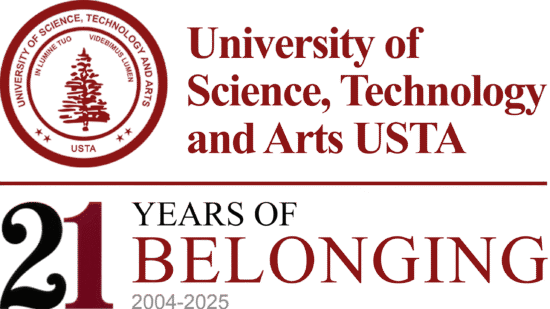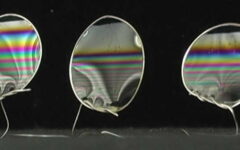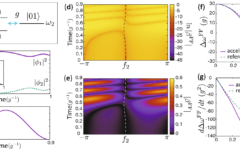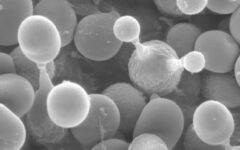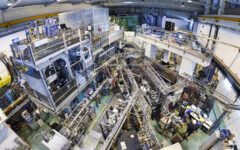Warming ocean water undercuts Antarctic ice shelves
1 August 2023 2023-08-01 22:22Warming ocean water undercuts Antarctic ice shelves
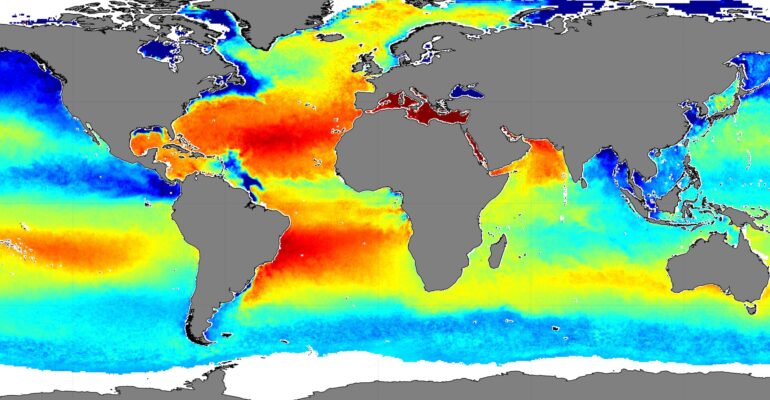
Warming ocean water undercuts Antarctic ice shelves
Source: University of Colorado at Boulder
Summary: ‘Upside-down rivers’ of warm ocean water threaten the stability of floating ice shelves in Antarctica, according to a new study. The study highlights how parts of Antarctica’s ice sheet may be weakening due to contact with warm ocean water.
“Upside-down rivers” of warm ocean water threaten the stability of floating ice shelves in Antarctica, according to a new study led by researchers at the University of Colorado Boulder’s National Snow and Ice Data Center published today in Nature Geoscience. The study highlights how parts of Antarctica’s ice sheet may be weakening due to contact with warm ocean water.
“We found that warm ocean water is carving these ‘upside-down rivers,’ or basal channels, into the undersides of ice shelves all around the Antarctic continent. In at least some cases these channels weaken the ice shelves, making them more vulnerable to disintegration,” said Karen Alley, a Ph.D. student in CU-Boulder’s Department of Geological Sciences and lead author of an analysis published today in Nature Geoscience.
Ice shelves are thick floating plates of ice that have flowed off the Antarctic continent and spread out onto the ocean. As ice shelves flow out to sea, they push against islands, peninsulas, and bedrock bumps known as “pinning points.” Contact with these features slows the flow of grounded ice off the continent. While ice shelves take thousands of years to grow, previous work has shown that they can disintegrate in a matter of weeks. If more ice shelves disintegrate in the future, loss of contact with pinning points will allow ice to flow more rapidly into the ocean, increasing the rate of sea level rise.
“Ice shelves are really vulnerable parts of the ice sheet, because climate change hits them from above and below,” said NSIDC scientist and study co-author Ted Scambos. “They are really important in braking the ice flow to the ocean.”
The features form as buoyant plumes of warm and fresh water rise and flow along the underside of an ice shelf, carving channels much like upside-down rivers. The channels can be tens of miles long, and up to 800 feet “deep.”
When a channel is carved into the base of an ice shelf, the top of the ice shelf sags, leaving a visible depression, or “wrinkle,” in the relatively smooth ice surface. Alley and her colleagues mapped the locations of these wrinkles all around the Antarctic continent using satellite imagery, as well as radar data that images the channels through the ice, mapping the shape of the ice-ocean boundary.
The team also used satellite laser altimetry, which measures the height of an ice shelf surface with high accuracy, to document how quickly some of the channels were growing. The data show that growing channels on the rapidly melting Getz Ice Shelf in West Antarctica can bore into the ice shelf base at rates of approximately 10 meters (33 feet) each year.
The mapping shows that basal channels have a tendency to form along the edges of islands and peninsulas, which are already weak areas on ice shelves. The team observed two locations where ice shelves are fracturing along basal channels, clear evidence that basal channel presence can weaken ice shelves to the point of breaking in vulnerable areas.
Ice shelves are thick floating plates of ice that have flowed off the continent and out onto the ocean. As ice shelves flow out to sea, they push against islands, peninsulas, and bedrock bumps known as “pinning points.” Contact with these features slows the ice flowing off the continent. If ice shelves disintegrate in the future, loss of contact with pinning points will allow ice to flow more rapidly into the ocean, increasing rates of sea level rise.
While no ice shelves have completely disintegrated due to carving by basal channels, the study points to the need for more observation and study of the features, said co-author… “It’s feasible that increasing ocean temperatures around Antarctica could continue to erode ice shelves from below.”
The study, “Impacts of warm water on Antarctic ice shelf stability through basal channel formation,” was led by University of Colorado Boulder Ph.D. student Karen Alley, who worked with coauthors Ted Scambos of NSIDC and Matthew Siegfried and Helen Fricker of Scripps Institute of Oceanography. Their work was funded in part by NASA and the U.S. Geological Survey.
The National Snow and Ice Data Center (NSIDC) is part of the Cooperative Institute for Research in Environmental Sciences at the University of Colorado Boulder.
Scripps Institution of Oceanography is part of the University of California, San Diego.
